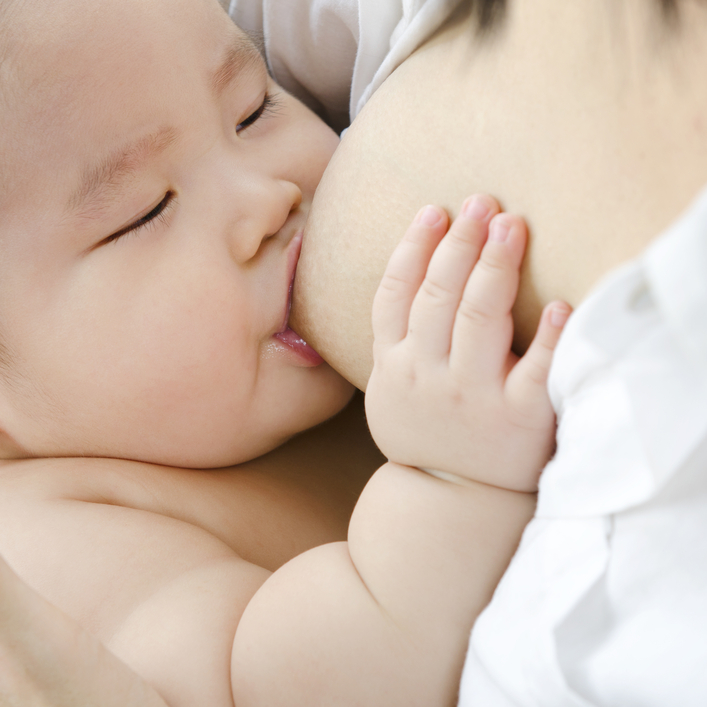Baby still hungry after feed
Do I Have a Hungry Baby, or Is Something Else Going On?
Your little one has three main jobs at the moment: eat, sleep, and poop/pee. After you bring baby home, it might seem like you’re on a constant cycle of feed, burp, and diaper change — because you are!
Babies grow and develop so much that they double their weight in the first 5 months of life. All this growing is exhausting and takes a lot of energy. Babies also need to feed every few hours or so because their tiny tummies can’t hold very much at a time.
Your baby will be hungry a lot of the time, but sometimes they might be squirmy or upset for other reasons. Here’s how to tell whether you need to feed your little angel again, or if they need something else.
In most cases, by the time your baby wails, they’ve been hungry for a while. Crying usually happens late into the hungry stage. Your baby may try to tell you they’re hungry in other ways first.
Signs and signals that your baby is hungry depend on how old (or new) your little one is.
Newborns and babies under the age of 6 months may tell you they need to be fed by:
- putting their hands in or near their mouth
- waving their hands toward their mouth
- turning their head toward mama’s breast (or anyone’s chest area)
- turning toward or looking at a bottle
- puckering or smacking their lips
- clenching their little hands (because they’re trying to not get upset with you for not taking the hint!)
Older babies and toddlers up to the age of two may be more expressive in their signs that they’re hungry:
- pointing at or reaching for food
- getting excited or loud when they see food
- opening their mouth when they see food or are offered some
- gesturing or making noises to let you know they’re hungry
Sometimes it might seem like your baby is hungry and asking to eat, but there’s actually another reason that your baby is giving you the hunger vibe. It’s easy to confuse hunger with the urge to suck.
Sucking is a reflex in the first 6 months of a baby’s life that helps them relax and self-soothe. It may even help your baby sleep better. In fact, a study including 104 babies found those who sucked on their fingers or a pacifier woke less at night and slept for longer periods — music to a parent’s ears!
Your baby may want to suck for the following reasons:
- Comfort. Some babies will want to breastfeed or bottle-feed even when they’re not hungry because they want to sleep or be held. Sucking helps them relax — plus they get your attention!
- Teething. If your baby is teething, sucking and chewing can sometimes help soothe tender gums. Your baby might seem like they want to feed just because sucking helps ease their pain and distracts them from teething frustrations.
- Acid reflux. Some babies with gastroesophageal reflux disease (GERD) may act hungry when they really want to suck to wash reflux back down.
 Overfeeding can make reflux worse, so if you suspect this may be the case, try a pacifier.
Overfeeding can make reflux worse, so if you suspect this may be the case, try a pacifier. - Anxiety. Anxiety in babies is as real as anxiety in children and adults. Some babies may pucker their lips like they’re sucking, squirm, or want to feed because they’re anxious. Both sucking and feeding help some babies calm down or feel more secure.
When your baby is hungry, they might exhibit behavioral cues or signals that are similar to those they show when they’re bored, agitated, sleepy, or upset.
You can help calm your little one by gently holding, rocking, or cuddling them. A baby massage can also help. If your baby makes sucking noises or likes to suck their fingers, give them a pacifier to suck on between feedings.
Help your baby calm down and stop fussing by helping them feel more secure and relaxed. You can try:
- using a soft, quiet voice and tone when you’re talking to your baby
- picking up and handling your baby slowly and gently
- holding your baby so that their arms and legs are tucked in close to their body
- avoiding overstimulation by being around too many people or too much activity at a time
- avoiding TV
- avoiding noisy areas, especially when baby is trying to sleep
- avoiding bright lights during sleep time
- avoiding waking your baby suddenly
- letting your baby sleep when they want to
- waiting until your baby wakes up on their own to feed or change them
Also, avoid “rewarding” your baby for any reason with milk or food. An unhealthy attachment to food can begin as early as when your little one is still a baby.
An unhealthy attachment to food can begin as early as when your little one is still a baby.
If your baby is teething, try putting a teething toy or soother into the refrigerator before offering it to them. Sucking and gnawing on something cold can help your little one.
If reflux is causing discomfort for your little one, try keeping your baby upright for 30 minutes after each feeding and offering a pacifier to soothe them.
Babies need to feed often because they have teeny tiny stomachs. A 4- to 5-week-old baby can only hold about 3 to 4 ounces of milk at a time. This is why babies are ravenous again only a little while after feeding. As babies grow, their stomachs also grow, enabling them to handle more milk.
It’s important to avoid overfeeding your baby. Giving your baby more milk than they can handle at a time won’t make them feel fuller longer. The extra milk will usually come out as vomit, making both of you more upset than when baby was just hangry.
If you’re breastfeeding, your baby will normally stop on their own when they’re full. Alternatively, they might continue latching on but only suck weakly. This is your cue to end the feeding session.
Alternatively, they might continue latching on but only suck weakly. This is your cue to end the feeding session.
If you’re bottle-feeding, its easier to overfeed because it’s natural to want your baby to finish their bottle if there is any formula left. Avoid this by following the general rule of thumb published by the American Academy of Pediatrics (AAP): On average, your baby should get 2.5 ounces of formula per day for every pound of body weight, up to 32 ounces.
You might be tempted to give your baby a few bites of solid food to fill their bottomless pit. Avoid starting your baby on any solid food before they’re 6 months old. The AAP recommends breastfeeding as the sole source of food until 6 months of age.
Trying to feed your baby solid food too early can lead to vomiting, an upset stomach, diarrhea, and even choking.
Even if your baby can stomach solid food, giving it to them too early can lead to overfeeding, weight issues, and other health problems during childhood and beyond.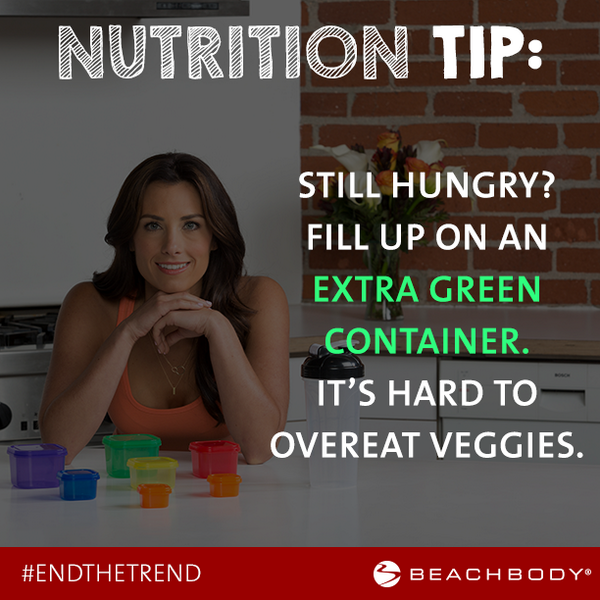
Once your baby does start eating solid foods, they’ll still need breastmilk or formula. One common saying is, “Food before one is just for fun.” Talk to your doctor about specific nutrition recommendations for your child.
Your baby will go through days or weeks of bigger than normal growth spurts during their first year. Like tiny teenagers, this is when they might be even more ravenous and want to feed more. This kind of feeding is called cluster feeding, and it’s completely normal.
True cluster feeding happens mostly in breastfed babies and helps signal mom’s body to increase milk production. Bottle-fed babies do not generally need to cluster feed.
Growth spurts in babies typically happen when they’re about 3 weeks, 6 weeks, 3 months, and 6 months old. During a growth spurt, your baby will likely cluster feed. This means they might want to feed longer and more frequently.
The time of day when they feel hungriest might also change. Your night owl might suddenly get hungrier and want several feeds in the evening, going on to sleep longer at night. This is welcome news for your sleep-deprived self!
This is welcome news for your sleep-deprived self!
Growth spurts and cluster feedings are different for every baby. They might last a few days or even weeks. You may have to breastfeed or bottle-feed every 30 minutes some days! Don’t worry, your baby will be back to their normal hunger levels once the growth spurt passes.
It may feel like your baby is hungry all the time, but they have a lot of growing and developing to get through in just a year. They also begin life with stomachs the size of an acorn!
However, sometimes your baby might seem like they want to feed when they actually want other kinds of attention from you. You know your baby best, and in time, you’ll learn to understand their cues.
Hungry Baby - Why Is My Baby Always Hungry? – Baby Care Advice
We all appreciate that young babies have tiny tummies and are growing at a rate that is faster than any other time in their lives. Hence, they need to eat often. However, when parents express concern about their ‘hungry baby’ this refers to a baby that appears to be excessively hungry, who demands feeds more often than expected, or is eating well above the recommended volume of milk for a baby of his age and size.
The ‘hungry baby’ phenomenon where babies act like they have an insatiable appetite is especially common in babies younger than 3 months of age.
The first step toward finding a solution that will satisfy your baby is to distinguish between the reasons for genuine hunger and the appearance of hunger. In this article, I explain what causes healthy babies to act like they’re excessively hungry and what you can do to promote your baby’s contentment.
Genuine hungerThere are several reasons why babies might be genuinely hungry and need to feed sooner or require more milk than you expect. These include:
1. Normal behavior
2. Cluster feeding
3. Growth spurt
4. Catch-up growth
5. Poor latch
6. Low breastmilk supply
7. Diluted baby formula
8. Extreme vomiting or diarrhea
1. Normal behaviorIf you’re a first-time parent, it may be that you are unfamiliar with the huge range of ‘normal’ infant feeding patterns and behaviors. The first step is to clarify your expectations about your baby’s feeding with his healthcare professional.
The first step is to clarify your expectations about your baby’s feeding with his healthcare professional.
If it’s confirmed that he’s feeding more often or consuming greater volumes than expected for a baby of his age and weight, consider if any of the multiple reasons for the appearance of hunger, described later in this article, apply.
2. Cluster feeding‘Cluster feeding’, which is a pattern of frequent nursing in the afternoons and evenings, is an example of normal feeding behavior for breastfed babies. A breastfed baby could demand feeds every one to two hourly when cluster feeding.
3. Growth spurtHow quickly a baby is growing will influence his appetite. Babies' growth occurs in a step-wise pattern. Growth spurts (a period of accelerated growth) are separated by growth plateaus (a period of stagnant growth). During a growth spurt, your baby may appear to be hungrier than usual. If breastfeeding, he may demand nursing more often.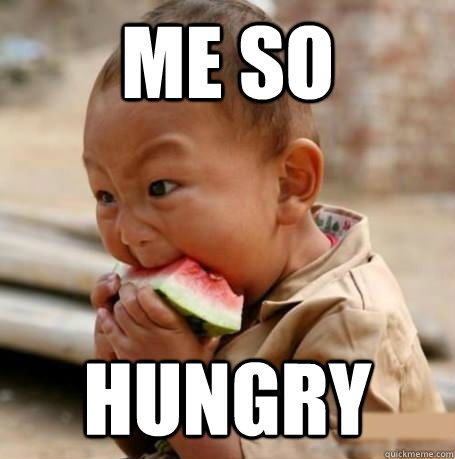 If bottle-feeding, he might drain the bottle and want a little more.
If bottle-feeding, he might drain the bottle and want a little more.
On the flip side, during a growth plateau, your baby’s appetite will reduce and his milk volumes decrease. He might also go longer periods of time between nursing or feeding sessions.
4. Catch-up growthCatch-up growth is a period of accelerated, compensatory growth (faster than typical for age) which occurs after the removal or resolution of a problem that previously caused under-nutrition or growth delay.
5. Poor latchIf a breastfed baby is unable to feed to satisfaction as a result of a poor latch, he will demand frequent nursing.
6. Low milk supplyIf a breastfeeding mother has a low milk supply, her baby may demand to feed more often. (See our article on How to tell when baby is getting enough breastmilk.)
7. Diluted formulaIf a baby’s infant formula is accidentally diluted, perhaps due to using the wrong scoop or not accurately following the manufacturer’s instructions, this would decrease the calories he would receive, and he would want to feed more often.![]()
If your baby vomits often and hence loses much of the milk he receives while feeding, he may demand to feed more often. However, it’s important to take care to avoid overfeeding because it’s one of the most common reasons for healthy babies to vomit.
Similarly, if he has frequent watery bowel motions as a result of a digestive disorder, for example milk protein allergy or intolerance, he may be losing nutrients and calories due to poor digestion, and hence demand more frequent feeding.
Rule out the possibility of a feeding management problem such as lactose overload before assuming the cause is due to milk protein allergy or intolerance, as this is one of the most common reasons for healthy, thriving babies to have frequent, watery stools, extreme gas, and abdominal discomfort.
Needless to say, if your baby appears unwell or is not gaining sufficient weight, consult with his healthcare professional.
Surprisingly, it's typically babies who have no problems putting on weight that are the most difficult to satisfy. If this is the case, it may be that one of the following reasons is mistaken as hunger.
Why babies APPEAR hungry
Infant behavioral cues are not easy to read, especially before 3 months of age. There are many reasons why parents might think their baby is hungry when he is not. These include:
1. Misinterpreting behavior cues
2. Frequent feeding patterns
3. Underlying sleeping problem
4. Abdominal discomfort linked to overfeeding
While it's possible for there to be only one cause, generally there is a combination of the reasons listed below.
1. Misinterpreting behavioral cuesHunger is one of the first things we suspect when a baby fusses, cries, or looks like he wants to suck. However, hunger is only one of many different reasons for babies to display these behaviors. Other reasons include:
Infant reflexesInfant reflexes such as rooting and hand-to-mouth are often assumed to be signs of hunger. Sucking and swallowing reflexes are often mistaken as confirmation that a baby is genuinely hungry. However, these reflexes can be triggered irrespective of whether a baby is hungry or not.
Sucking and swallowing reflexes are often mistaken as confirmation that a baby is genuinely hungry. However, these reflexes can be triggered irrespective of whether a baby is hungry or not.
Young babies have a strong urge to suck. They often want to suck when tired, overstimulated, bored, uncomfortable,or for pleasure. Consequently, a baby's desire to suck is not proof that he is hungry.
Tiredness cues Babies display signs of tiredness differently than we expect. Tired signs displayed by young babies include clenched fists, waving arm and leg movements, facial grimaces, fussing and grumbling then crying. Infant tiredness cues are often overlooked or misinterpreted as hunger, boredom, or pain.
ThirstA thirsty baby may give the impression of hunger. Once a baby starts to eat solid foods, it’s recommended that he be offered small volumes of water during the day in addition to his usual milk feeds.
2. Frequent feeding patterns
Frequent feeding patternsBabies can develop a pattern of frequent feeding - often referred to as snack-feeding or grazing - where they take small volumes of breastmilk or infant formula at each feed. As a result, they demand feeds more often.
Snack-feeding is easily identifiable when a bottle-fed baby consumes small volumes. However, it’s not as readily recognizable when a baby is breastfed. Many breastfeeding mothers mistakenly blame low milk supply when their baby wants to nurse every hour or two.
3. Speed-feedingBabies have an immature nervous system. It takes time for their brain to register that their stomach is full. Speed-feeding means a baby consumes the milk too quickly. Speed-feeding can result in newborn babies overfeeding before they recognize they have had enough. (See How long to feed for ideal feeding duration for age.)
4. Underlying sleeping problemAn unresolved sleeping problem is a major reason for infant feeding problems including the appearance of hunger, fussy feeding behavior, overfeeding, and underfeeding. A sleep association problem is the most common of all reasons for healthy babies to experience sleeping problems such as brief naps, frequent night awakenings and irritability due to sleep deprivation.
A sleep association problem is the most common of all reasons for healthy babies to experience sleeping problems such as brief naps, frequent night awakenings and irritability due to sleep deprivation.
Without understanding the effects of sleep associations on their baby’s ability to fall asleep and remain asleep, many parents mistakenly assume the cause is hunger.
While there are many different props, activities, or conditions that individual babies could learn to associate with the act of falling asleep, feeding to sleep is especially common during the newborn period.
A feeding-sleep association, which means a baby has learned to link feeding with the act of falling asleep, is even more likely to cause a baby to give the appearance of hunger.
Once a feeding-sleep association is established (which can occur in babies as young as 2 weeks of age) the baby will act like he wants to feed whenever he wants to sleep because he's learned that "This is the way I go to sleep".
One or a combination of the reasons for the appearance of hunger described above, e.g., misinterpreting behavioral cues, a feeding-sleep association, and speed-feeding in combination with an active sucking reflex will increase the risk of overfeeding in newborns.
The symptoms of overfeeding can include spitting up, diarrhea, and abdominal discomfort.
What do babies like to do when uncomfortable? They like to suck! If a baby’s desire to suck for comfort is mistaken as hunger, he will be offered another feed, perpetuating the overfeeding cycle.
What you can do for an insatiably hungry baby1. Resolve any feeding problem: This includes feeding position, latch, flow rate, supply problems, and bottle-feeding equipment.
2. Resolve any sleeping problem: Better sleep = better feeding, and the combination adds up to a content baby.
3. Don’t assume he’s hungry: If your baby appears hungry sooner than expected, consider the possibility of other causes like tiredness, discomfort, or desire to suck, before assuming the cause is hunger.
4. Satisfy your baby’s sucking needs: Provide a pacifier, or your finger to suck on. He will let you know if he’s not satisfied to suck without receiving milk.
Completing the above steps will go a long way towards helping you to gain more confidence in understanding your baby’s needs and accurately interpreting his behavioral cues.
How Baby Care Advice can helpWe appreciate that unless you have extensive experience in child development and the effect of different infant feeding and settling practices on a baby’s behavior, it can be difficult to know how and where to start to resolve a baby care problem. There are two ways in which we can help you gain a greater understand of your baby’s needs and your role as your baby’s parent and caregiver.
1. Rowena Bennett’s parenting books
2. Baby Care Advice consultation
3. Rowena's Online Bottle-Feeding Aversion Program
1. Rowena Bennett’s parenting books‘Your Sleepless Baby’
Good quality sleep not only promotes babies’ contentment it will reduce the risk of feeding problems. Information contained in my book, ‘Your Sleepless Baby’, is designed to help parents to understand their baby’s sleep needs, how their actions influence their baby's sleep, and ways in which parents can improve the quality of their baby's sleep.
Information contained in my book, ‘Your Sleepless Baby’, is designed to help parents to understand their baby’s sleep needs, how their actions influence their baby's sleep, and ways in which parents can improve the quality of their baby's sleep.
Baby Care Advice consultants have extensive experience in providing parenting education and assisting parents to resolve feeding and sleeping problems that affect healthy babies. A Baby Care Advice consultation will assist you to explore all possible reasons for your healthy baby’s discontentment. The information, guidance, and advice you receive will help you to gain greater confidence in your ability to accurately interpret your baby’s behavioral cues and provide for his needs. (For more on our consultation service).
3. Rowena's Online Bottle-Feeding Aversion ProgramBy Rowena Bennett, RN, RM, CHN, MHN, IBCLC.
Written Revised Aug 2021
Copyright www. babycareadvice.com 2021. All rights reserved. Permission from the author must be obtained to reproduce all or any part of this article.
babycareadvice.com 2021. All rights reserved. Permission from the author must be obtained to reproduce all or any part of this article.
How to understand that the child is full of breast milk?
March 27, 2022
03/27
5 minutes
5 minutes
70871
27
5
Breastfeeding (gf) is the basis for the harmonious development of the child. The longer it lasts, the better. You can often hear mothers complaining that their baby is not full, there is not enough milk. Then mixtures begin to be included in the diet. Is it correct?
Article content
- How to tell if your baby is getting enough breast milk
- False signs of lack of milk
- What to do if the baby does not get enough breast milk
- How to understand that a newborn is hungry
- Causes of malnutrition
- Consequences of malnutrition
- FAQ
- Expert opinion
How to tell if your baby is getting enough breast milk
The main indicator that the baby is full is calm behavior, normal development. If the baby actively suckles the breast, is cheerful, active during the day, sleeps well - most likely milk is in abundance. The satiety of a newborn depends on:
If the baby actively suckles the breast, is cheerful, active during the day, sleeps well - most likely milk is in abundance. The satiety of a newborn depends on:
- application frequency. In the first months, the mother feeds the baby on demand. This amounts to up to 12 feedings per day;
- the duration of sucking is usually up to 20 minutes. This time is enough to get enough. Do not limit the child to this time range. The baby will determine when he is full and let go of the breast;
- swallowing reflex. It is by him that many mothers determine whether the baby is eating or using the breast as a pacifier;
- weight gain is an excellent indicator that there is enough breast milk;
- number of urination.
Given all these factors, it remains to observe the baby in order to understand whether he is full or not.
False signs of lack of milk
At the beginning of feeding, every mommy feels the rush of milk. Over time, this feeling disappears. Panic begins that milk is decreasing, it has become less. This is not true. The fact is that the mother's body adapts to the needs of the baby. Milk is produced just enough to be enough for him. Therefore, it is not worth grabbing bottles of the mixture.
Over time, this feeling disappears. Panic begins that milk is decreasing, it has become less. This is not true. The fact is that the mother's body adapts to the needs of the baby. Milk is produced just enough to be enough for him. Therefore, it is not worth grabbing bottles of the mixture.
Another “wake-up call” for moms is a decrease in the number of bowel movements. Parents are used to changing diapers often, and now the baby's stool has become less frequent. This does not indicate a lack of milk at all. The child grows, the number of acts of defecation becomes less. Of course, if there is no stool for several days, this is an occasion to consult a doctor.
Sometimes a baby's appetite may increase, and he will suckle for a longer time or more often. the reason for this is a temporary shortage of milk, an increase in the needs of the crumbs. In this case, you can not take the breast, but allow the child to eat as much as necessary. Over time, lactation will be restored.
Before panicking about a lack of milk, it is important to be sure. Our doctors at a remote consultation will tell you the reasons for the lack of milk, reassure mothers, advise on breastfeeding, and will be in touch at any time of the day.
What to do if the baby does not get enough breast milk
It happens that breast milk is really produced little. You can deal with this problem in the following ways:
| Name | Description |
| Apply more often | Frequent breastfeeding stimulates milk production. Over time, the amount of milk will increase |
| Offer both breasts at one feeding | If the baby completely sucked milk from one breast, but remained hungry, offer a second |
| Finish feeding when the baby wants it | The baby will let go of the breast on its own when it feels full. |
| Apply correctly | It is important to ensure that the newborn is properly latching on to the breast. The nipple and areola must be completely in the baby's mouth. |
| With sluggish sucking, change the breast | Active sucking produces the production of oxytocin, which is responsible for the flow of milk. By changing breasts often, the amount of milk increases |
| Do not replace breast milk with formulas | With the introduction of the mixture, the amount of milk decreases |
Example
Mommy, 25 years old, turned to lactation consultants for help. The complaints were the lack of milk, the baby screamed at her chest, pinched her with his hands. The feeding process took a long time. I had to buy dry mix to supplement. The consultant carefully studied the process of feeding, explained that in this way the child stimulates the production of milk. To increase its quantity, it is necessary to try to feed on demand, not take the breast, worry less, eat right and completely eliminate supplementary feeding. After a month of long efforts, a positive trend was observed, milk began to suffice, the baby was full.
To increase its quantity, it is necessary to try to feed on demand, not take the breast, worry less, eat right and completely eliminate supplementary feeding. After a month of long efforts, a positive trend was observed, milk began to suffice, the baby was full.
How to tell if a newborn is hungry
To understand that the baby is not full of breast milk, you need to look for the following signs of malnutrition:
- too little weight gain
- the breaks between feedings are small, the child is capricious, restless;
- the baby sucks a lot, but there is no swallowing reflex;
- rare stool;
- the child is lethargic, apathetic, weakened;
- sleep is broken.
In this case, it is advisable to seek help from specialists and establish the process of breastfeeding.
Causes of malnutrition
Common causes of low milk supply are:
- irregular breastfeeding;
- short duration of feeding;
- improper latch of the breast of a newborn;
- nasal congestion in an infant;
- uncomfortable position for feeding.

Important! Milk may not be enough if the mother drinks little liquids, the diet is poor, irrational, hormonal disruptions.
Consequences of malnutrition
The body of the baby is constantly growing, it needs a sufficient amount of milk. If he does not receive enough food, the risk of developing dystrophy, rickets increases. The baby quickly loses body weight. The risk of developing cardiovascular diseases increases, the work of the hormonal system is disrupted. The body is quickly depleted, which leads to death.
Do not panic and try to feed the child more than normal. As well as picking up alternative nutrition for babies. Contact our doctors. At a remote consultation, they will analyze the causes and consequences of a lack of breast milk, establish the process of breastfeeding, and advise specialists.
FAQ
Why is it important for a baby to eat both foremilk and hindmilk?
+
Foremilk contains more carbohydrates, is sweeter, and is a building block for energy. Hindmilk is rich in proteins, carbohydrates, important for development and growth. That is why it is important that the baby completely “eats” the milk from one breast.
Hindmilk is rich in proteins, carbohydrates, important for development and growth. That is why it is important that the baby completely “eats” the milk from one breast.
Why is the baby not eating colostrum?
+
When feeding a baby with colostrum in the first days after birth, you should not worry about its quantity. It is produced enough to saturate the baby. Frequent crying may indicate colic, stress, demanding attention. The stomach at birth in a baby holds no more than 6 ml. Therefore, a large amount of colostrum is not required to satiate.
How to understand if a child is crying because of colic or because he is hungry?
+
With colic, the abdominal muscles are tense, refuses to breast, pulls his arms and legs. If you give a remedy for colic, the anxiety goes away. If the child is hungry, he demands the breast. And if you offer, he calms down.
Why does a newborn refuse to breastfeed and willingly eat formula?
+
This is due to the fact that sucking a bottle is much easier than breastfeeding. Therefore, the baby begins to ask for a bottle, not wanting to work at the breast.
Therefore, the baby begins to ask for a bottle, not wanting to work at the breast.
Expert opinion
Nature took care of the harmonious processes of feeding offspring. Each mother produces exactly as much milk as her baby needs. The question whether or not a newborn is full of food torments almost all mothers. Instead of turning to specialists, parents decide on mixed feeding. What reduces the production of breast milk. The main task of every mother is long-term breastfeeding.
We publish only verified information
Article author
Pruzhinin Mark Yulievich pediatrician
Experience 30 years
Consultations 1572
Articles 104
An experienced pediatrician with extensive experience and clinical experience in various medical organizations in the field of general pediatrics, resuscitation and unesthesiaology and neural and neural and neural and neural and neural and neural and neural and neural integration. Works with leading experts, attends international and Russian conferences.
Works with leading experts, attends international and Russian conferences.
Sources
- ... Averyanova, N.I. Feeding a child in the first year of life / N.I. Averyanova, A.A. Gaslov. - M.: Phoenix, 2019.
- ... Rosenthal, Sarah Breastfeeding. All you need to know about breastfeeding your baby / Sarah Rosenthal. - M.: FAIR-Press, 2017. - 448 p.
- ... Nazaretyan, VG Feeding children of the first year of life and early age / V.G. Nazareth. - M.: Phoenix, 2016.
 - 128 p.
- 128 p. - ... Newman, J. Breastfeeding / J. Newman. - M.: GEOTAR-Media, 2018. - 568 p.
Share:
Category: About children
About health Pregnancy and childbirth About children healthy lifestyle Psychology Neurology Gastroenterology Personal care Medicines and dietary supplementsPrevious article
Newborn first aid kit
Next article
Teeth are being cut in an infant
Other related articles
Cherepenko Lyudmila Vikentievna
31.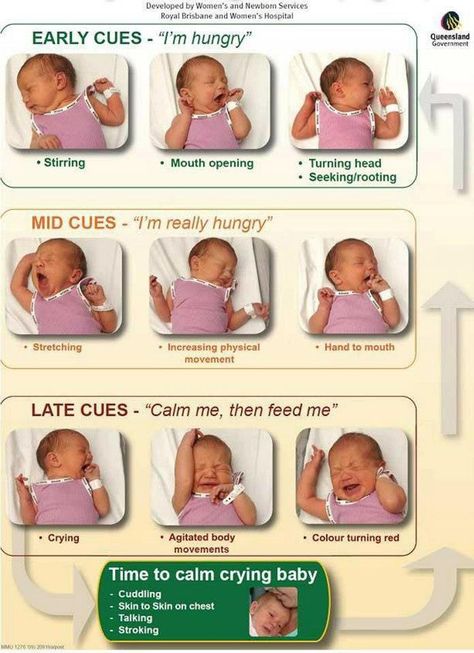 01
01
"Omicron": symptoms of a new strain of COVID-19
Pro health
Monakhova Albina Petrovna
14.06
depression in children
Psychology
Cherepenko Lyudmila Vikentievna
03.01
Angiopathy of the retina
Health
Breastfeeding in the first month: what to expect
Not sure how to establish lactation and increase milk production? If you need help, support, or just want to know what to expect, read our first month breastfeeding advice
Share this information
The first weeks of breastfeeding are a very stressful period. If at times you feel like you can't handle it, know that you are not alone. Feeding your baby all day long is completely natural and helps produce breast milk, but can be quite tiring at times. Be patient, think about yourself and remember: after the first month, when milk production stabilizes, it will become easier.
If at times you feel like you can't handle it, know that you are not alone. Feeding your baby all day long is completely natural and helps produce breast milk, but can be quite tiring at times. Be patient, think about yourself and remember: after the first month, when milk production stabilizes, it will become easier.
How often should a baby be breastfed?
Babies are born with a small stomach that grows rapidly as milk production increases: in the first week it is no larger than an apricot, and after two weeks it is already the size of a large hen's egg. 1.2 Let the child eat as much as he wants and when he wants. This will help him quickly regain the weight lost after birth and grow and develop further.
“Be prepared to feed every two to three hours throughout the day. At night, the intervals between feedings can be longer: three to four or even five hours, says Cathy Garbin, a recognized international expert on breastfeeding. Some eat quickly and are satiated in 15 minutes, while others take an entire hour to feed. Do not compare your breastfeeding regimen with that of other mothers - it is very likely that there will be nothing in common between them.
Do not compare your breastfeeding regimen with that of other mothers - it is very likely that there will be nothing in common between them.
At each feed, give your baby a full meal from one breast and then offer a second one, but don't worry if the baby doesn't take it. When the baby is full, he lets go of his chest and at the same time looks relaxed and satisfied - so much so that he can immediately fall asleep. The next time you feed, start on the other breast. You can monitor the order of the mammary glands during feeding using a special application.
Why does the child always ask for a breast?
The first month is usually the hardest time to breastfeed. But do not think that because the baby is constantly hungry and asks for a breast almost every 45 minutes, then you do not have enough milk.
In the first month, the baby needs to eat frequently to start and stimulate the mother's milk production. It lays the foundation for a stable milk supply in the future. 3
3
In addition, we must not forget that the child needs almost constant contact with the mother. The bright light and noise of the surrounding world at first frighten the baby, and only by clinging to his mother, he can calm down.
Sarah, mother of three from the UK, confirms: “Crying is not always a sign of hunger. Sometimes my kids just wanted me to be around and begged for breasts to calm them down. Use a sling. Place the cradle next to the bed. Don't look at the clock. Take advantage of every opportunity to relax. Forget about cleaning. Let those around you take care of you. And not three days, but six weeks at least! Hug your baby, enjoy the comfort - and trust your body."
Do I need to feed my baby on a schedule?
Your baby is still too young for a strict daily schedule, so
forget about breastfeeding schedules and focus on his needs.
“Volumes have been written about how to feed a baby on a schedule, but babies don't read or understand books,” Cathy says.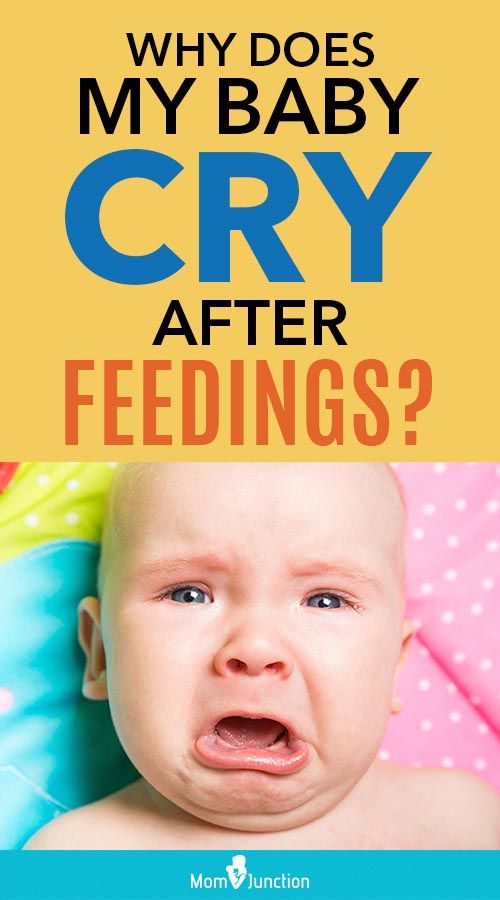 - All children are different. Some people can eat on a schedule, but most can't. Most often, over time, the child develops his own schedule.
- All children are different. Some people can eat on a schedule, but most can't. Most often, over time, the child develops his own schedule.
Some mothers report that their babies are fine with scheduled feedings, but they are probably just the few babies who would eat every four hours anyway. Adults rarely eat and drink the same foods at the same time of day - so why do we expect this from toddlers?
Offer your baby the breast at the first sign of hunger. Crying is already the last stage, so be attentive to early signs: the baby licks his lips, opens his mouth, sucks his fist, turns his head with his mouth open - looking for the breast. 4
What is a “milk flush”?
At the beginning of each feed, a hungry baby actively suckles the nipple,
thereby stimulating the milk flow reflex - the movement of milk through the milk ducts. 5
“Nipple stimulation triggers the release of the hormone oxytocin,” explains Cathy. “Oxytocin is distributed throughout the body and causes the muscles around the milk-producing glands to contract and the milk ducts to dilate. This stimulates the flow of milk.
This stimulates the flow of milk.
If the flushing reflex fails, milk will not come out. This is a hormonal response, and under stress it may not work at all or work poorly. Therefore, it is so important that you feel comfortable and calm when feeding.
“Studies show that each mother has a different rhythm of hot flashes during one feed,” Kathy continues, “Oxytocin is a short-acting hormone, it breaks down in just 30-40 seconds after formation. Milk begins to flow, the baby eats, the effect of oxytocin ends, but then a new rush of milk occurs, the baby continues to suckle the breast, and this process is repeated cyclically. That is why, during feeding, the child periodically stops and rests - this is how nature intended.
The flow of milk may be accompanied by a strong sensation of movement or tingling in the chest, although 21% of mothers, according to surveys, do not feel anything at all. 5 Cathy explains: “Many women only feel the first rush of milk. If you do not feel hot flashes, do not worry: since the child eats normally, most likely, you simply do not understand that they are.
If you do not feel hot flashes, do not worry: since the child eats normally, most likely, you simply do not understand that they are.
How do you know if a baby is getting enough milk?
Since it is impossible to track how much milk a baby eats while breastfeeding, mothers sometimes worry that the baby is malnourished. Trust your child and your body.
After a rush of milk, the baby usually begins to suckle more slowly. Some mothers clearly hear how the baby swallows, others do not notice it. But one way or another, the child himself will show when he is full - just watch carefully. Many babies make two or three approaches to the breast at one feeding. 6
“When a child has eaten, it is noticeable almost immediately: a kind of “milk intoxication” sets in. The baby is relaxed and makes it clear with his whole body that he is completely full, says Katie, “Diapers are another great way to assess whether the baby is getting enough milk. During this period, a breastfed baby should have at least five wet diapers a day and at least two portions of soft yellow stool, and often more.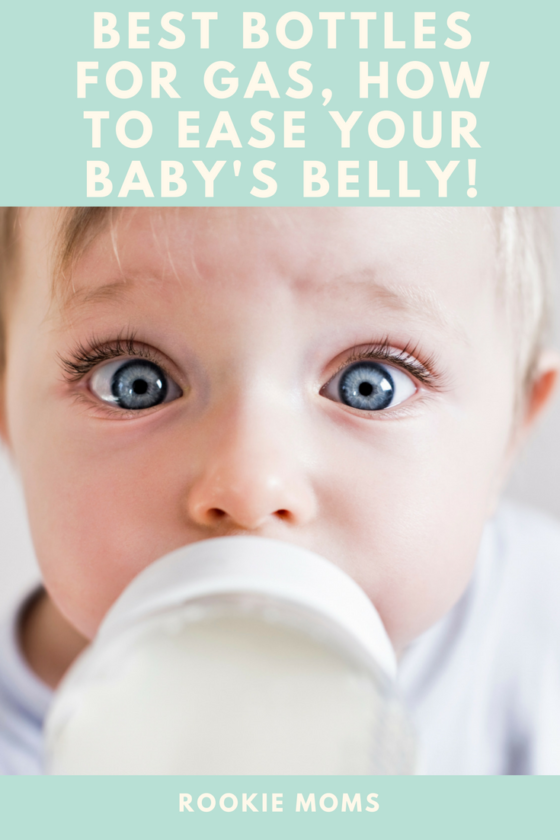 ”
”
From one month until weaning at six months of age, a baby's stool (if exclusively breastfed) should look the same every day: yellow, grainy, loose, and watery.
When is the child's birth weight restored?
Most newborns lose weight in the first few days of life. This is normal and should not be cause for concern. As a rule, weight is reduced by 5-7%, although some may lose up to 10%. One way or another, by 10–14 days, almost all newborns regain their birth weight. In the first three to four months, the minimum expected weight gain is an average of 150 grams per week. But one week the child may gain weight faster, and the next slower, so it is necessary that the attending physician monitor the health and growth of the baby constantly. 7.8
At the slightest doubt or signs of dehydration, such as
dark urine, no stool for more than 24 hours, retraction of the fontanel (soft spot on the head), yellowing of the skin, drowsiness, lethargy, lack of appetite (ability to four to six hours without feeding), you should immediately consult a doctor. 7
7
What is "cluster feeding"?
When a baby asks to breastfeed very often for several hours, this is called cluster feeding. 6 The peak often occurs in the evening between 18:00 and 22:00, exactly when many babies are especially restless and need close contact with their mother. Most often, mothers complain about this in the period from two to nine weeks after childbirth. This is perfectly normal and common behavior as long as the baby is otherwise healthy, eating well, gaining weight normally, and appears content throughout the day. 9
Cluster feeding can be caused by a sharp jump in the development of the body - during this period the baby especially needs love, comfort and a sense of security. The growing brain of a child is so excited that it can be difficult for him to turn off, or it just scares the baby. 9 If a child is overworked, it is often difficult for him or her to calm down on his own and the help of adults is needed. And breastfeeding is the best way to calm the baby, because breast milk is not only food, but also pain reliever and a source of happiness hormones. 10
And breastfeeding is the best way to calm the baby, because breast milk is not only food, but also pain reliever and a source of happiness hormones. 10
“Nobody told me about cluster feeding, so for the first 10 days I just went crazy with anxiety - I was sure that my milk was not enough for the baby,” recalls Camilla, a mother from Australia, “It was a very difficult period . I was advised to pump and supplement until I finally contacted the Australian Breastfeeding Association. There they explained to me what was happening: it turned out that it was not about milk at all.
Remember, this is temporary. Try to prepare dinner for yourself in the afternoon, when the baby is fast asleep, so that in the evening, when he begins to often breastfeed, you have the opportunity to quickly warm up the food and have a snack. If you are not alone, arrange to carry and rock the baby in turns so that you have the opportunity to rest. If you have no one to turn to for help and you feel that your strength is leaving you, put the baby in the crib and rest for a few minutes, and then pick it up again.
Ask your partner, family and friends to help you with household chores, cooking and caring for older children if you have any. If possible, hire an au pair. Get as much rest as possible, eat well and drink plenty of water.
“My daughter slept a lot during the day, but from 23:00 to 5:00 the cluster feeding period began, which was very tiring,” recalls Jenal, a mother from the USA, “My husband tried his best to make life easier for me - washed, cleaned, cooked, changed diapers, let me sleep at every opportunity and never tired of assuring me that we were doing well.
If you are concerned about the frequency of breastfeeding, it is worth contacting a specialist. “Check with a lactation consultant or doctor to see if this is indicative of any problems,” recommends Cathy. “Resist the temptation to supplement your baby with formula (unless recommended by your doctor) until you find the cause. It may not be a matter of limited milk production at all - it may be that the child is inefficiently sucking it.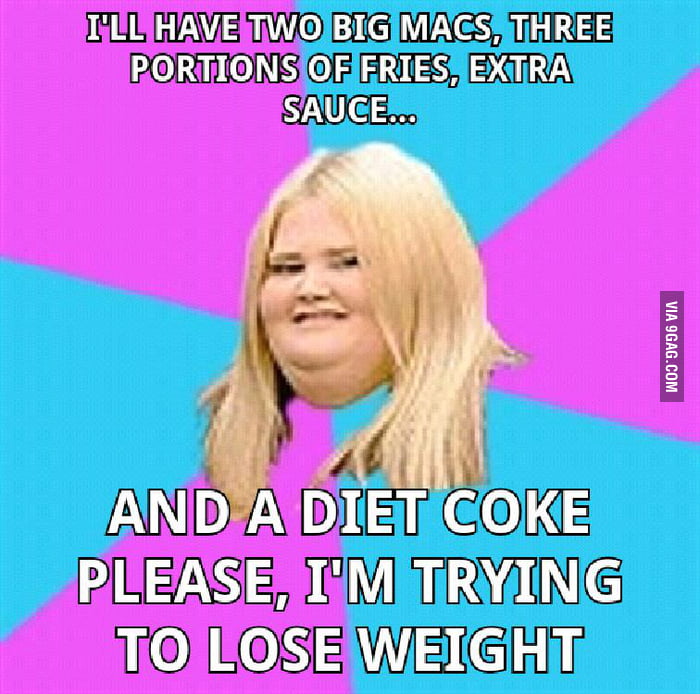
When will breastfeeding become easier?
This early stage is very special and does not last long. Although sometimes it seems that there will be no end to it, rest assured: it will get easier soon! By the end of the first month, breast milk production will stabilize, and the baby will become stronger and learn to suckle better. 2.3 Any problems with latch on will most likely be resolved by this time, and the body will be able to produce milk more efficiently, so inflammation and leakage of milk will begin to subside.
“The first four to six weeks are the hardest, but then things start to get better,” Cathy assures. It just needs to be experienced!”
The longer breastfeeding continues, the more benefits it brings, from saving on formula and improving sleep quality 11-13 to boosting your baby's immune system 14 and reducing your risk of certain cancers. 15
“When you feel like you're pushing yourself, try to go from feed to feed and day to day,” advises Hannah, a UK mom. “I was sure I wouldn’t make it to eight weeks. And now I have been breastfeeding for almost 17 weeks, and I dare say it is very easy.”
“I was sure I wouldn’t make it to eight weeks. And now I have been breastfeeding for almost 17 weeks, and I dare say it is very easy.”
Read the resource Breastfeeding After the First Month: What to Expect
Readings
1 Naveed M et al. An autopsy study of relationship between perinatal stomach capacity and birth weight. Indian J Gastroenterol .1992;11(4):156-158. - Navid M. et al., "Relationship between prenatal gastric volume and birth weight. Autopsy." Indian J Gastroenterol. 1992;11(4):156-158.
2 Neville MC et al. Studies in human lactation: milk volumes in lactating women during the onset of lactation and full lactation. Am J Clinl Nutr . 1988;48(6):1375-1386. - Neville M.S. et al., "Female Lactation Study: Milk Quantity in Lactating Women at the Beginning and Peak of Lactation. " Am F Clean Nutr. 1988;48(6):1375-1386.
" Am F Clean Nutr. 1988;48(6):1375-1386.
3 Kent JC et al. Principles for maintaining or increasing breast milk production. J Obstet , Gynecol , & Neonatal Nurs . 2012;41(1):114-121. - Kent J.S. et al., "Principles for Maintaining and Increasing Milk Production". J Obstet Ginecol Neoneutal Nurs. 2012;41(1):114-121.
4 Australian Breastfeeding Feeding cues ; 2017 Sep [ cited 2018 Feb ]. - Australian Breastfeeding Association [Internet], Feed Ready Signals; September 2017 [cited February 2018]
5 Kent JC et al. Response of breasts to different stimulation patterns of an electric breast pump. J Human Lact . 2003;19(2):179-186. - Kent J.S. et al., Breast Response to Different Types of Electric Breast Pump Stimulation. J Human Lact (Journal of the International Association of Lactation Consultants). 2003;19(2):179-186.
2003;19(2):179-186. - Kent J.S. et al., Breast Response to Different Types of Electric Breast Pump Stimulation. J Human Lact (Journal of the International Association of Lactation Consultants). 2003;19(2):179-186.
6) Kent J.C. Volume and frequency of breastfeedings and fat content of breast milk throughout the day. Pediatrics. 2006;117(3): e 387-395. - Kent J.S. et al., "Amount and frequency of breastfeeding and fat content of breast milk during the day." Pediatrix (Pediatrics). 2006;117(3):e387-95.
7 Lawrence RA, Lawrence RM. Breastfeeding: A guide for the medical profession. 7th ed. Maryland Heights MO, USA: Elsevier Mosby; 2010. 1128 p . - Lawrence R.A., Lawrence R.M., "Breastfeeding: A guide for healthcare professionals." Seventh edition. Publisher Maryland Heights , Missouri, USA: Elsevier Mosby; 2010. P. 1128.
P. 1128.
8 World Health Organization. [Internet]. Child growth standards; 2018 [cited 2018 Feb] - World Health Organization. [Internet]. Child Growth Standards 2018 [cited February 2018].
9 Australian Breastfeeding Association . [ Internet ]. Cluster feeding and fussing babies ; - Australian Breastfeeding Association [Internet], Cluster Feeding and Screaming Babies; December 2017 [cited February 2018].
10 Moberg KU, Prime DK. Oxytocin effects in mothers and infants during breastfeeding. Infant . 2013;9(6):201-206.- Moberg K, Prime DK, "Oxytocin effects on mother and child during breastfeeding". Infant. 2013;9(6):201-206.
11 U.S. Department of Health & Human Services [Internet]. Surgeon General Breastfeeding factsheet; 2011 Jan 20 [cited 2017 Feb] - Department of Health and Human Services [Internet], "Breastfeeding Facts from the Chief Medical Officer", Jan 20, 2011 [cited Feb 2017]
12 Kendall-Tackett K et al. The effect of feeding method on sleep duration, maternal well-being, and postpartum depression. clinical lactation. 2011;1;2(2):22-26. - Kendall-Tuckett, K. et al., "Influence of feeding pattern on sleep duration, maternal well-being and the development of postpartum depression." Clinical Lactation. 2011;2(2):22-26.
The effect of feeding method on sleep duration, maternal well-being, and postpartum depression. clinical lactation. 2011;1;2(2):22-26. - Kendall-Tuckett, K. et al., "Influence of feeding pattern on sleep duration, maternal well-being and the development of postpartum depression." Clinical Lactation. 2011;2(2):22-26.
13 Brown A, Harries V. Infant sleep and night feeding patterns during later infancy: Association with breastfeeding frequency, daytime complementary food intake, and infant weight. Breast Med . 2015;10(5):246-252. - Brown A., Harris W., "Night feedings and infant sleep in the first year of life and their association with feeding frequency, daytime supplementation, and infant weight." Brest Med (Breastfeeding Medicine). 2015;10(5):246-252.
14 Hassiotou F et al. Maternal and infant infections stimulate a rapid leukocyte response in breastmilk.






